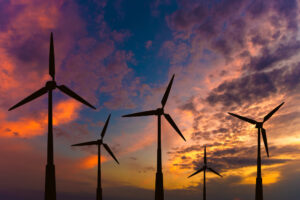60 years ago, 60% of the Thai workforce worked in agriculture. Which drives the Thai economy, 36 percent of GDP. After 60 years, the agricultural labor force has decreased by about 2 times, but the share of GDP has decreased by more than about 4 times. 9 percent, reflecting the slower development of the Thai agricultural sector than other sectors.
Thailand’s data may indicate that the agricultural sector has fallen out of development. However, if considering the data of other countries, it may be necessary to revisit the Thai agricultural sector. This is because agricultural workers in countries such as Iceland, Israel and Singapore have seen higher productivity in both size and growth over the past 30 years than nonfarm workers.
Why Thai farmers can’t keep up with Thai workers outside the agricultural sector and farmers in foreign countries? This article will explain the phenomenon. It is adapted from the concept of the vicious cycle of poverty of Ragnar Nurkse, an Estonian economist. The cycle will begin to explain from the poor. Which, of course, rarely has money. When there is no money, there is no savings. causing no capital accumulation or investment for self-development resulting in no increase in productivity less production and continues to be poor forever
For Thai farmers, poverty may be inseparable. This is because the life cycle of most farmers resembles the vicious cycle of poverty. With a form of farming in Thailand that generates low income. Moreover, this career is often faced with high risks and losses. cause financial problems cannot invest in developing or modifying farming methods As a result, agriculture remains the same. forming a circular cycle no progress The details of the circuit are as follows.
recession cycle of Thai farmers
First, poor production model, low productivity: agricultural productivity is still low, back in 1991, the average productivity of small and large Thai farmers was 1,086 US dollars (year value 2015) and is ranked at the bottom, at 126 out of 160 countries around the world. After 28 years, although the productivity of Thai farmers has improved to 3,069 US dollars (value in 2015), the world ranking is still close to the same. 146 out of 218 countries. In addition, from 1991 to 2019, where Thai farmers were 1.6 times more productive than China in 1991, it turned out that Chinese farmers were 1.6 times more productive than Thailand in 2019. among leaders in agriculture It was found that Israeli farmers are 34 times more productive than Thailand.
The main reason is Most Thai farmers are still farming with the old model. Most of the farmers choose to cultivate low-value crops. 60 percent of Thai farmers, or 4.6 million households, are farmers. In addition, two-thirds of farmers are engaged in monoculture. cultivate a single crop does not diversify This causes farmers to risk losing frequently. From both the productivity that depends on the climate change is severe and unpredictable. and prices according to the nature of commodities with high volatility. Sensitive to world production Coupled with the economic and geopolitical factors that are highly uncertain.

Item 2: Low income, frequent losses: Most Thai farmers have not much profit from agriculture. The net income of the farmers fell about 260 baht per day per household. This is still lower than the new minimum wage of 337 baht per day per person. For Thai farmers in the past 50 years, the price of rice has increased by 3.9 times, but the cost of production, especially the price of chemical fertilizer, has increased by 11.4 times, resulting in income deducting costs. (Including labor costs) on average, continuous losses since 2013, as well as economic crops such as rubber and sugar cane, which farmers on average have been losing more often over the past 10 years.
Article 3 High debt burden: Thai farmers have more debt than assets at 1.2 times, and the proportion is likely to increase. The main reason comes from farming and loss. Including having to borrow money to invest in farming in the next season Farmers who suffer losses often have to borrow more and more, resulting in higher interest payments. There is no strength to repay the principal. Trapped in debt until it’s difficult to get out. In worse cases Farmers who have so much debt that they can no longer borrow money in the system There is no other way than to turn to informal loans, which come with exorbitant interest costs. until finding a dead end have to sell a livelihood
last joint Inability to adapt: Most Thai farmers do not adapt to traditional farming, partly due to financial obstacles. which prevents farmers from investing and developing agriculture, such as water supply and storage adapting soil conditions to suit other forms of agriculture Investment in the purchase of mother seedlings or seeds of other types of agricultural products the use of technology in each stage of cultivation, etc., but there are other factors that make farmers unable and unwilling to adapt which drags Thai farmers into a cycle of recession, namely
Young people leave the agricultural sector to work in the city generation after generation. Sosomarat Chantarat et al. (2019)[1] found that from 2003 to 2013, the proportion of farmers under 40 years old decreased from 100%. 48 to 32 percent. On the other hand, the proportion of elderly farmers aged 60 years increased from 13 percent to 19 percent, bringing the average age of farmers in 2018 to 58 years. Productivity is steadily decreasing and the use of modern machinery is decreasing. reflects a more difficult adaptation
measures to subsidize prices or farmers’ income from the state which is likely to help us get out of that cycle of regression But several studies indicate that As a result, farmers do not adapt to higher-yielding agricultural practices such as integrated farming. and changing crops and varieties, etc., which Jirat Janepuengporn et al. (2019) [2] found that government subsidy measures resulted in farmers having more opportunities to grow traditional rice as well as more monoculture farming. While Wissanu Attavanich (2021)[3] also found that agricultural policies greatly reduce the debt burden of agricultural households.
From the cycle of recession and two pulling factors that seem to cause the lives of Thai farmers to continue to deteriorate in this article. In the next article, we will present steps that will help farmers move from the cycle of recession to the cycle of opportunity. By taking lessons from a variety of new original models that have been explored from different areas of the country to see concepts and practices. Please follow the next part.
Author : Jirat Janepuengporn Panjapat Prasitdetsakul Economic Structural Policy Department
refer : [1] Somaras Chantarat Boonthida Sangiamnet Wissanu Attawanich and Jirat Janepuengporn (2019), “Situation of aging and productivity and farming of Thai agricultural households”, aBRIDGEd, PIER. [2] Jirat Jenpuengporn, Somaras, Chantarat Witsanu Attawanich and Boontida Sengiamnet (2019), “Thai Agricultural Dynamics. and implications for the returns and risks of agricultural households”, aBRIDGEd, PIER. [3] Wissanu Attawanich (2021), “Assessing the impact of various public policies on the economic well-being of Thai farmers”, National Research Council of Thailand.
-
pakgonhttps://pakgon.com/author/pakgon/
-
pakgonhttps://pakgon.com/author/pakgon/
-
pakgonhttps://pakgon.com/author/pakgon/
-
pakgonhttps://pakgon.com/author/pakgon/




